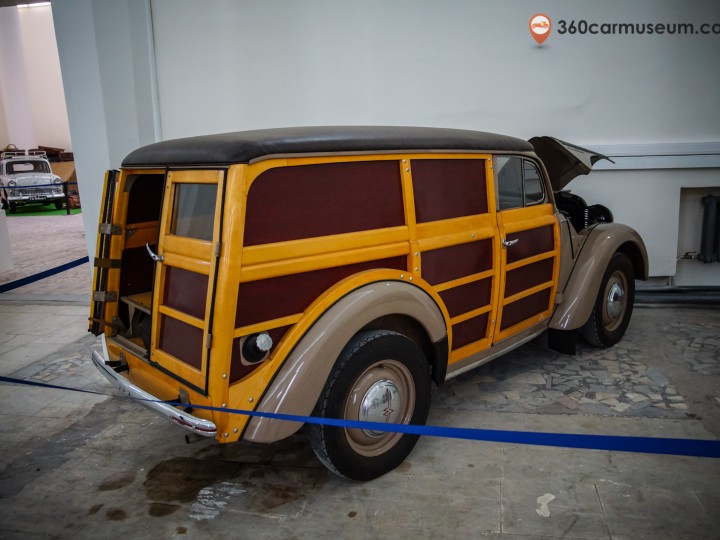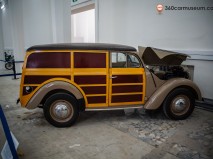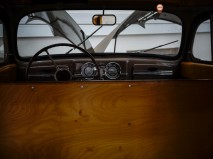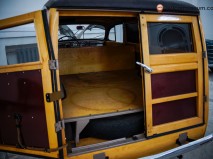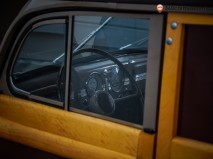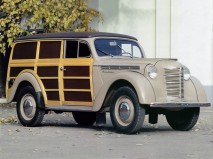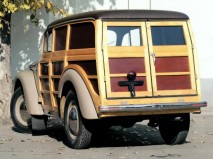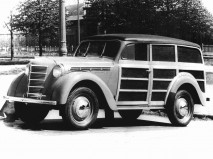1954 Moskvich-401-422
The all-metal bodies possessed better exploitation qualities and more up-dated appearance. But the development of their production involved the construction of the whole kit of unique body’s die sets. It was reckoned to be a very hard and expensive task in the 40-50-ies. Besides the production of such cars needed a great rolled steel spread, which was enough in the after-war USSR. Back then even the cabs of the trucks GAZ-51, ZIS-150, YAZ-200, UralZIS were made of wood. Therefore the special modifications of the Moskvich could become serial products only in a wooden variant.
Two versions were admitted for production in the USSR: a cargo-passenger 5-door station wagon Moskvich-400-421 and a freight 3-door car Moskvich-400-422. Nevertheless, as compared to initial German versions they were notably simplified. They refused from an aerodynamic form of the roof and the rear in favor of a plain angular “box”, the outside steel back pillars disappeared. The wooden bodies were not built by the plant MZMA. It produced only chassis with an engine compartment and a windscreen. The wooden piles were made at the aviation plant in Fili (at present it is an aerospace NPO (scientific-production association) named after Khrunichev). The Van Combine in Shumerlya of Chuvash Autonomous Soviet Socialist Republic manufactured similar bodies.
In the result only a pickup version became mass. Behind the front seat where the car had the front edge of the backseat pad the van’s body was divided with a partition, but it did not reach the ceiling and was about half the height. The cargo could be moved out of the body’s depth from the cab. The floor plates in the cargo compartment were made even, for that reason they were put over rather high protrusions of the bottom side – the tunnel of the drive shaft and the bump that is situated over the rear axle gearbox. Consequently rather a commodious cavity formed for a spare wheel, tools and other driver’s stash.
The pickup was called Moskvich-401-422 since 1954 after the development of the base chassis. The base sedan was substituted for a new automobile of the second generation Moskvich-402 in April 1956. The plant MZMA released the chassis of the old type for vans till December. The last year they were equipped with the engines of the 402 model with an increased operating capacity from 1,074 cc up to 1,220 cc and increased power from 26 up to 35 hp.


